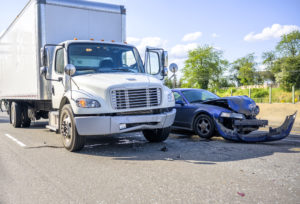 People today see cars as a sign of modern life, and it’s hard to imagine living without one. But what you tend to forget is their important history.
People today see cars as a sign of modern life, and it’s hard to imagine living without one. But what you tend to forget is their important history.
You no longer think about the car’s presence because they have been around for over 150 years. But it’s important to remember the problems and issues with technology in its early days if you want to fully understand how useful it is.
So, to relive the old days, some people restore an old car and see how it can still thrive in modern times. This article will help you learn more about the art of car restoration and how it works.
What is Car Restoration?
Car restoration is repairing, painting, and replacing certain elements of an old car to restore it to pre-sale condition. This process means that the vehicle closely mimics its original make and design while maintaining the performance level of a new vehicle.
Basic Process of Restoring a Car
Planning is necessary for any project, even if you want to wing it. A car restoration project involves pulling the car apart, sorting the pieces, and then repairing and reassembling it in the appropriate order. This summary shows how things usually work when restoring an old car.
Disassemble the Car
The first step is to take apart the dashboard and the inside of the car. These parts include the wires, engine gearbox, exterior panels, windows, and headlights.
Brake Inspection and Upgrade
Check the brakes to see if they need to be replaced before you take them off. Old brakes often make a lot of noise. If pressing down on the brake pedal is hard, you will need to repair the brake booster. Once it’s been removed, write down any new parts you need to order.
You can keep the OEM drum brakes already on the car or convert them to disc brakes. Also, you might want to plan for a disc brake change down the road, even if you decide to fix the problem.
Unrusty Metal Powder Coating
Bumpers, wheel trims, and other metal parts can be coated with powder. Powder coats last much longer than paint, making them a much better choice.
Remove Paint and Rust
Sand the paint off or use a paint stripper. Add any rusty parts to the next list. Replacing the part fully is the best thing that can be done. But the replacement does work well in the short run when given proper treatment.
Apply a Sealant, Primer, and Paint
Corrosion and chips can be avoided by sealing under the car. After this step, you can fill, sand, and ready the car to paint it. But before you paint your car, ensure no dust particles for a smooth finish.
Check Engine
Sometimes, it costs a lot to get the engine. When looking for a used engine, it’s best to find one that hasn’t been used much. Also, consider the water pump, valves, and timing chain, as they must be replaced.
Inspect Additional Car Parts
Check other parts as well, from the heater to the air conditioning. It’s possible that these parts also need to be painted or powder-coated.
Add Safety Elements
Most classic cars don’t have modern safety features like airbags and seats, so these parts must be added.
Rewire and Reassemble
The last steps are rewiring the car and putting the brakes, suspension, engine, cooling system, and dashboard back together. Put the windows and lights back in. Also, work on the inside, such as the seats and other designs.
Bring Back Old Cars with Proper Restoration
Many people find it exciting to restore old cars. So, if you have an outdated car that you still want to use, check out classic car restorations Australia to upgrade your car to run like a modern one. You can achieve the classic car project of your dreams with car restoration.


